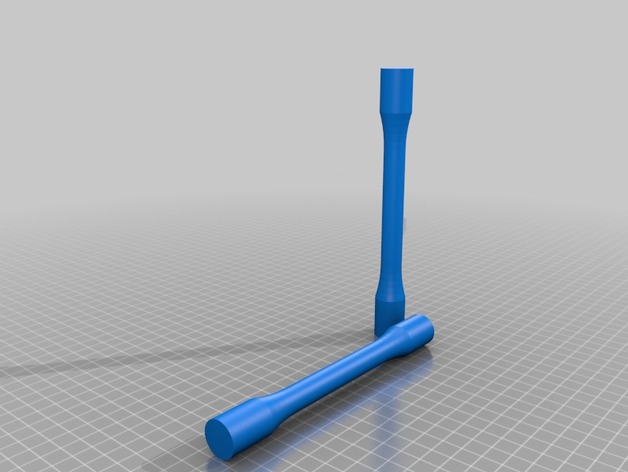
Perpendicular Tensile Test specimen
thingiverse
Everyone who has used a 3-D printer before knows that the orientation of a print can greatly affect its ability to handle a load. Because of the layering process used in 3D printing, objects tend to be stronger when pulled perpendicular to the layer build up direction vs when pulled parallel to it. This design will allow students to study the difference in tensile strength of 3D printed material parallel and perpendicular to the "grain" of the print Print Settings Notes: Different materials and layer heights will yield different results. Experiment and optimize your material! How I Designed This This tensile specimen is built per ASTM E8 to ensure they can be used in a standard tensile testing machine Custom Section Project Objectives: The objective of this process is to observe and understand the different tensile strengths of 3D printed material loaded in perpendicular directions. This is a study in orthotropic materials. Audiences: This project would be best suited for advanced high school-university level students interested in material science, and 3D printing Preparation: The only major piece of hardware needed for this project is a tensile testing machine which is available in most universities that have an engineering department. Students should have an understanding of what tensile strength is as well as stress/strain curves. Students should experiment with various different 3D printable materials and layer heights to see what effects they have on tensile strength. Steps: Student will print multiple test specimen in both orientations and test them till failure to find the stress strain curve and total tensile strength of the parts. Students can then compare the different results they get for perpendicular vs parallel loading. Results: Students should walk away with a deeper understanding of orthotropic material and an improved ability to design load bearing 3D printed objects
With this file you will be able to print Perpendicular Tensile Test specimen with your 3D printer. Click on the button and save the file on your computer to work, edit or customize your design. You can also find more 3D designs for printers on Perpendicular Tensile Test specimen.
